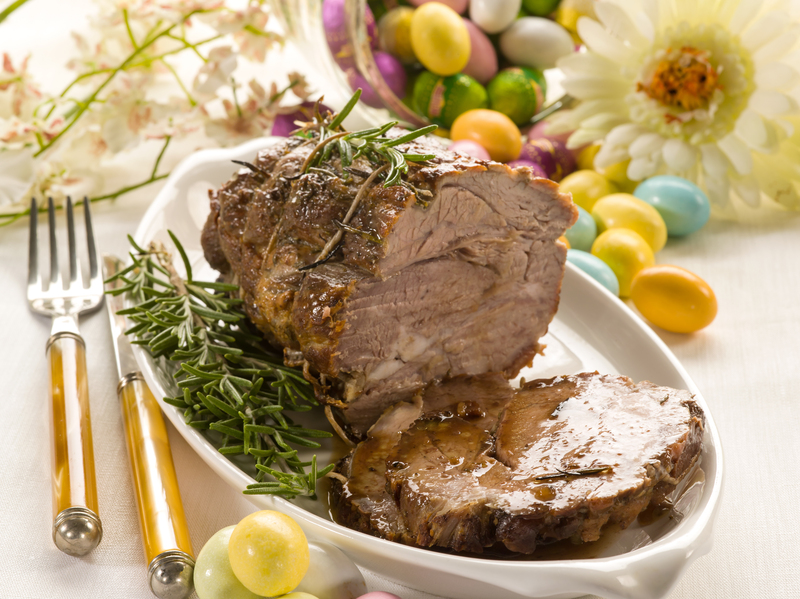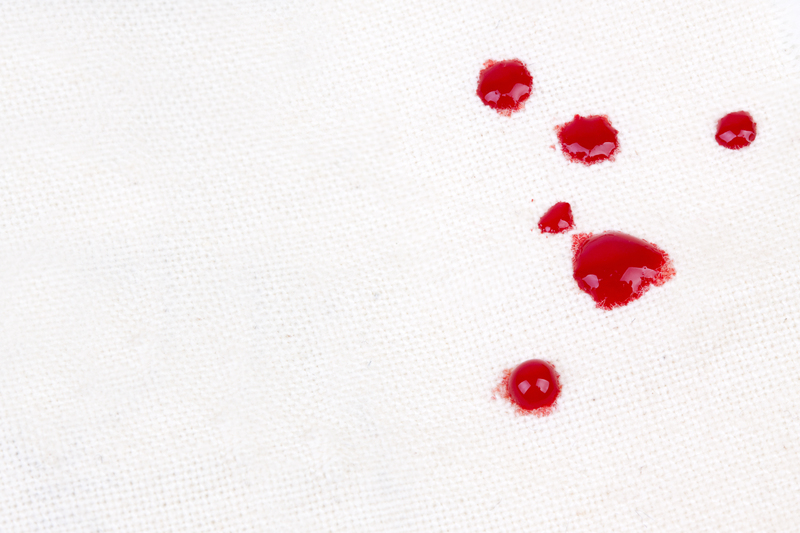Step-by-Step Guide to Washing Velvet Curtains and Preserving Their Beauty
Posted on 02/06/2025
Step-by-Step Guide to Washing Velvet Curtains and Preserving Their Beauty
Velvet curtains imbue any space with a touch of elegance, providing a rich texture and depth to your home's ambiance. Their luscious appearance and tactile softness create a sense of luxury, but to maintain their beauty and longevity, these delicate drapes require special care. Whether your curtains are crafted from natural cotton velvet or synthetic materials, understanding the proper cleaning techniques for velvet curtains is paramount to keeping them looking stunning year after year.
This comprehensive guide offers you a step-by-step process for washing velvet curtains, including tips for spot cleaning, machine washing, hand washing, and maintenance advice to preserve their plushness and vibrant color. Let's unravel the secrets to caring for your luxury window treatments and ensure their enduring allure.

Why Velvet Curtains Require Special Attention
Unlike ordinary textiles, velvet drapes consist of densely woven fibers that create a soft, thick pile. This delicate construction means they can easily lose their shape, develop pressure marks, or suffer crushing if cleaned improperly. Over time, dirt, dust, and household odors can accumulate in the fibers, dulling their opulent sheen. Therefore, proper cleaning is not just about aesthetics--it's about prolonging their life.
- Velvet's delicate pile can become damaged with harsh washing methods.
- Improper drying can lead to distortion or shrinkage of the fabric.
- Curtains may lose color vibrancy if exposed to harsh chemicals, hot water, or direct sunlight.
For these reasons, it's vital to follow the appropriate steps for washing velvet curtains and choose the right approach based on the type of velvet you own.
Understanding Different Types of Velvet Curtains
Before you begin cleaning your velvet drapery, determine which material your curtains are made from. The three primary types of velvet used for curtains include:
- Silk velvet: The most luxurious, delicate, and expensive; often requires professional cleaning.
- Cotton velvet: Soft, absorbent, and somewhat more durable; can sometimes be hand washed.
- Synthetic velvet (such as polyester): Sturdier and more resistant to shrinkage; often labeled as machine washable.
Tip: Always check the care label attached to your curtains for specific instructions. If your curtains say "dry clean only," do not attempt to wash them at home.
Step 1: Preparations Before Washing Velvet Curtains
Read the Manufacturer's Care Label
The process begins with carefully reading the care label. The label will tell you whether the curtains can be machine washed, hand washed, or whether they require dry cleaning. Following the manufacturer's guidance is the best way to prevent irreversible damage.
Remove Hardware and Shake Off Dust
- Take down the curtains and remove all hooks, rings, or other hardware.
- Gently shake out the curtains outdoors to eliminate loose dust and debris.
- For heavier curtains, use a vacuum cleaner with a brush attachment to gently remove deeper dust without disturbing the pile.
Test for Colorfastness
Velvet fabrics can sometimes bleed or fade when exposed to water or cleaning solutions. To test for colorfastness:
- Dampen a white cloth with lukewarm water or your intended cleaning solution.
- Blot an inconspicuous area of the curtain.
- Check for color transfer; if noticed, avoid water-based cleaning and consult a professional.
Step 2: Spot Cleaning Velvet Curtains
Minor stains on your velvet curtains don't always warrant a full wash. Here's how to spot clean velvet drapes safely:
- Mix a mild detergent with cool water.
- Dip a soft, lint-free cloth into the solution and gently blot (don't rub!) the stain.
- With a clean damp cloth, blot the area to remove any soapy residue.
- Allow the fabric to air dry--never use heat, as it can crush the velvet pile.
Always treat spots immediately to prevent stains from setting and spreading to the surrounding fabric.
Step 3: Washing Velvet Curtains
Hand Washing Velvet Curtains
Hand washing is the gentlest method and is ideal for cotton velvet curtains:
- Fill a large tub or sink with cold or lukewarm water.
- Add a mild liquid detergent (preferably formulated for delicate fabrics).
- Submerge the curtain, gently swishing it to allow water and soap to move through the fabric. Avoid wringing or twisting.
- Let soak for 5-10 minutes.
- Rinse thoroughly with clean water until no soap remains.
- Support the curtain's weight as you lift it from the water, keeping it as flat as possible.
Note: Do not scrub velvet or use bleach, as this will damage the fibers and alter the curtain's appearance.
Machine Washing Velvet Curtains
If your velvet drapes are labeled as machine washable (common with some synthetic velvets), follow these steps:
- Use a gentle or delicate cycle with cold water.
- Wash curtains alone, without mixing non-velvet items.
- Select a small amount of mild detergent (no fabric softeners).
- Place the curtain inside a mesh laundry bag if possible, to prevent snagging.
- Do not use a spin cycle, as this can twist, stretch, or crush the velvet pile.
Never overload the washing machine; velvet needs ample room to move freely in the drum.
Step 4: Drying Velvet Curtains
Proper drying is crucial for preserving the plushness and structure of washed velvet curtains:
- Do not tumble dry. The heat and tumbling action can flatten or destroy the pile.
- Do not wring out water. Instead, support the curtain and gently press out excess moisture with towels.
- Lay the curtain flat on a clean, dry towel, then roll it up to absorb additional moisture.
- Unroll and reshape the curtain. Lay it flat on a drying rack or another towel. If the size permits, you may hang it back on the rod to finish drying, ensuring it does not stretch out of shape.
- Avoid direct sunlight. Sunlight can fade the vibrant colors of velvet fabrics.
- Do not iron directly on the pile. If ironing is necessary, use a steamer or iron on the reverse side with a pressing cloth and the lowest setting.
Pro Tip: To restore the curtain's softness and plushness, gently brush the nap (pile) with a soft clothes brush once dry, following the direction of the pile.
Step 5: Rehanging and Caring for Velvet Curtains
Once your washable velvet curtains are dry, follow these final steps to maintain their elegant appearance:
- Re-attach hardware and carefully hang the curtains back in place.
- If creases remain, use a handheld steamer to gently rejuvenate the fibers. Hold the steamer a few inches from the fabric and move it slowly down the length of the curtain.
- Avoid direct contact with the curtain's surface to prevent water spots or shiny patches.
Regular Maintenance Tips for Velvet Curtains
- Vacuum curtains once a month using the brush attachment to lift dust and dirt, keeping the pile fresh.
- Address spills immediately to prevent staining.
- Protect from prolonged sun exposure to avoid color fading--consider using a sheer curtain behind the velvet as a shield.
- Avoid over-handling the curtains, as repeated touching can lead to matting.
- Have heavy silk or antique velvet curtains professionally cleaned once a year for optimal care.
Common Velvet Curtain Cleaning Mistakes to Avoid
- Skipping the colorfastness test: This can result in irreversible color fading or bleeding.
- Using hot water or strong detergents: Can shrink or damage velvet fibers.
- Overloading the washing machine: Leaves curtains improperly cleaned and can compress the pile.
- Wringing or twisting to remove water: Causes stretching and ruins the curtain's drape.
- Tumbling in a dryer: Flattens and potentially melts synthetic velvet piles.
- Ironing directly on velvet front: Leads to shiny, crushed marks that are hard to remove.
When to Seek Professional Care for Velvet Drapes
Some delicate, vintage, or high-value velvet curtains are best left in the hands of professionals. Choose professional dry cleaning if:
- The curtains are made of silk velvet or antique velvet.
- The label specifies "dry clean only".
- The curtains contain detailed beading, embroidery, or lining that could be damaged by water.
- Stains are extensive, or you are concerned about color bleeding or shrinkage.
Professional cleaners understand the complexities of luxury fabrics and use specialized equipment and solvents to clean velvet safely.

Frequently Asked Questions on Cleaning Velvet Curtains
Can I wash all velvet curtains at home?
No. Always check the label. Some synthetic velvet curtains are machine washable, while natural or silk velvets often require dry cleaning.
How often should I wash velvet curtains?
Generally, your velvet drapes should only be washed or deep cleaned once a year unless a spill or stain necessitates additional cleaning. Regular maintenance such as vacuuming keeps them fresh between washes.
Can I use a steam cleaner on velvet curtains?
Yes, but use caution. A garment steamer can gently remove wrinkles and help lift the pile, but avoid saturating the fabric and never let water droplets form or run down the surface.
What's the best way to remove pet hair from velvet curtains?
Frequent vacuuming with a soft brush attachment or occasional use of a lint roller can safely remove pet hair without disturbing the fabric.
Conclusion: Preserve the Allure of Your Velvet Curtains
Velvet curtains are an investment in sophistication and style--maintaining their luster doesn't have to be intimidating. By following this thorough step-by-step guide to washing velvet curtains, you'll prevent common cleaning pitfalls, keep stains at bay, and help your luxury window treatments grace your home for years to come.
Remember: Always consult care labels, test for colorfastness, and choose gentle cleaning methods. With these tips, any velvet lover can enjoy their curtains' opulent texture and rich color, season after season. For peace of mind with irreplaceable or complex drapery, don't hesitate to reach out to a professional cleaner specializing in fine household textiles.
Looking for more expert tips on home maintenance? Browse our website for additional cleaning guides, interior decor advice, and detailed care instructions for all your prized possessions.




